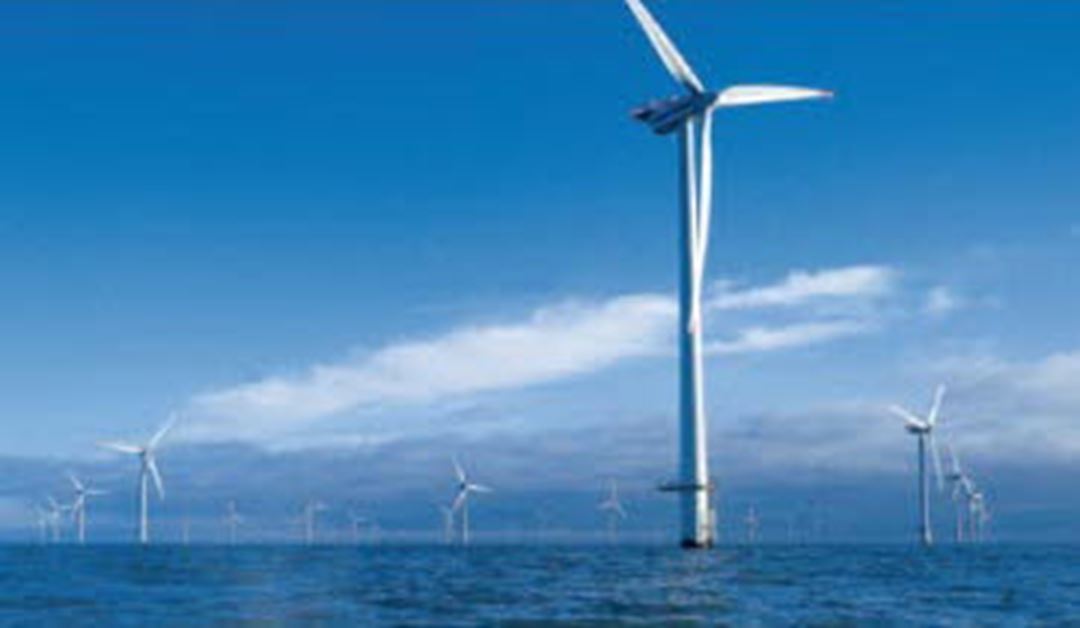In the course of the next five years, the HiPRWind (High Power, High Reliability Offshore Wind Technology) project will lay the foundations for delivery of a complete, fully functional offshore wind-turbine capable of generating 10 – 20 MW. For comparison, the power produced by modern wind–turbines lies between 300 kW and 6 MW.
Test platform in the Bay of Biscay
“In order to test the latest research results, we are constructing a 1 MW test platform in the Bay of Biscay off the north of Spain,” says Matthias Hofmann at SINTEF Energy Research. This will be ready in three years and will help us to close the energy gap and take the step from small-scale testing to a full-scale offshore installation.”
The point is that a floating deepwater wind-turbine needs to be designed quite differently from its equivalent on land. Challenges will emerge in the design of the rotor blades and control systems, and of course these new units will need to be able to operate as independently as possible.
“It is not enough to simply have wind turbines offshore; operating and maintaining them will involve challenges, such as simply reaching them. When seas are high, for example, it will be difficult to get “on board” for trouble-shooting and maintenance,” adds Hofmann’s colleague Harald Svendsen.
Plenty of power
As well as developing a concept for a 10 – 20 MW turbine, the members of the project are also looking at how the units of a huge floating wind-farm far out to sea can be interconnected, and connected to the electricity grid ashore.
The advantages of locating wind-turbines offshore are well known. A better wind regime is the first of these; it simply blows harder out at sea. Next, larger schemes can be built; a single North Sea block of 60 x 60 km is capable of producing more electricity than all Norway’s hydropower plants combined, while ten blocks could supply enough electric power for the whole of Europe.
The problem is: how to do it? Wind-turbines are already standing in shallow water off the UK and Denmark. But in the future, coastal sites are going to become more crowded, and both environmental and resource considerations will mean that these installations will have to be located further from the coast.
SINTEF participation
Scientists from SINTEF will work on two of the project’s ten work-packages.
One of these deals with connection to the grid, and how to transfer power from the turbine to the onshore grid. The challenges here are about minimising energy losses and meeting strict quality requirements regarding the supply of power. Among other things wind-farms will help to stabilise supplies in the event of a grid failure.
According to the scientists, this work-package will be a combination of desk studies and small-scale experiments in SINTEF/NTNU’s own “renewables laboratory”.
The other work-package deals with assembling all the information that is generated by the project and designing a route map based on such information.
For example, what are the individual steps involved in building a 10 MW floating wind-turbine? What market and logistics challenges are likely to emerge? This activity will also involve all the companies that are members of the project, and willgather information through workshops and meetings.
Facts about HiPRWind:
• The European Union’s HiPRWind project has a total budget of €19.8 million
• The offshore wind technology and floating offshore turbine consortium has 19 European partners, including ABB, Technip, Idesa and Wölfel. The project manager is Germany’s Fraunhofer Gesellschaft.
• Project duration: 2010 – 2015
• Both SINTEF and NTNU are members of the project.
What is happening in Norway in this field?
Three potential concepts for wind energy generation are currently under development in Norway: Hywind and Sway are based on turbines mounted on monotowers moored to the seabed, while Wind-Sea has three rotors mounted on a floater in the form of an equilateral triangle.
Hywind has been in operation since 2009, while the other two are still at the model stage. Hywind is moored off Karmøy in southwestern Norway, but as it is owned by Statoil it cannot be used for tests by research institutes.
SINTEF can boast of a high level of expertise in wind-power, including offshore, and some ten researchers at SINTEF Energy Research work full-time in this field. When the Research Council of Norway set up eleven centres of research on environmentally friendly energy, SINTEF Energy Research was allocated the management of the Nowitech and Cedren centres. Nowitech focuses on offshore wind technology, while Cedren’s contribution is to the development and dissemination of environmentally friendly designs.
As a result, Nowitech in Trondheim and Norcowe in Bergen were given funding last year to build a floating test turbine that will gather data and test a number of different designs. They will also build a floating station for measurements of wind and waves.

